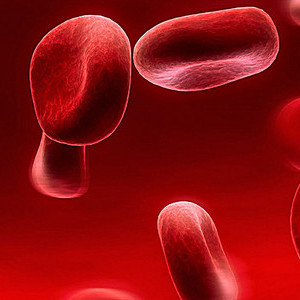Extrafine inhaled triple therapy versus dual bronchodilator therapy in chronic obstructive pulmonary disease (TRIBUTE): a double-blind, parallel group, randomised controlled trial
摘要:Summary Background Evidence is scarce on the relative risk-benefit of inhaled triple therapy, consisting of inhaled corticosteroid, long-acting muscarinic antagonist, and long-acting β2-agonist, versus dual bronchodilation for chronic obstructive pulmonary disease (COPD). We aimed to compare a single-inhaler triple combination of beclometasone dipropionate, formoterol fumarate, and glycopyrronium (BDP/FF/G) versus a single-inhaler dual bronchodilator combination of indacaterol plus glycopyrronium (IND/GLY) in terms of the rate of moderate-to-severe COPD exacerbations over 52 weeks of treatment. Methods This randomised, parallel-group, double-blind, double-dummy study was done at 187 sites across 17 countries. Eligible patients had symptomatic COPD, severe or very severe airflow limitation, at least one moderate or severe exacerbation in the previous year, and were receiving inhaled maintenance medication. After a 2 week run-in period with one inhalation per day of IND/GLY (85 μg/43 μg), patients were randomly assigned (1:1), via an interactive response technology system, to receive 52 weeks of treatment with two inhalations of extrafine BDP/FF/G (87 μg/5 μg/9 μg) twice per day or one inhalation of IND/GLY (85 μg/43 μg) per day. Randomisation was stratified by country and severity of airflow limitation. The primary endpoint was the rate of moderate-to-severe COPD exacerbations across 52 weeks of treatment in all randomised patients who received at least one dose of study drug and had at least one post-baseline efficacy assessment. Safety was assessed in all patients who received at least one dose of study drug. This study is registered with ClinicalTrials.gov, number NCT02579850. Findings Between May, 29 2015, and July 10, 2017, 1532 patients received BDP/FF/G (n=764) or IND/GLY (n=768). Moderate-to-severe exacerbation rates were 0·50 per patient per year (95% CI 0·45–0·57) for BDP/FF/G and 0·59 per patient per year (0·53–0·67) for IND/GLY, giving a rate ratio of 0·848 (0·723–0·995, p=0·043) in favour of BDP/FF/G. Adverse events were reported by 490 (64%) of 764 patients receiving BDP/FF/G and 516 (67%) of 768 patients receiving IND/GLY. Pneumonia occurred in 28 (4%) patients receiving BDP/FF/G versus 27 (4%) patients receiving IND/GLY. One treatment-related serious adverse event occurred in each group: dysuria in a patient receiving BDP/FF/G and atrial fibrillation in a patient receiving IND/GLY. Interpretation In patients with symptomatic COPD, severe or very severe airflow limitation, and an exacerbation history despite maintenance therapy, extrafine BDP/FF/G significantly reduced the rate of moderate-to-severe exacerbations compared with IND/GLY, without increasing the risk of pneumonia. Funding Chiesi Farmaceutici.
关键词:
论文方向:[{"id":13,"name":"细胞生物学"},{"id":896,"name":"医药科学"}]
发表期刊:The Lancet Volume 391, Issue 10125
发表时间:Fri Mar 23 00:00:00 CST 2018
数字识别码:10.1016/S0140-6736(18)30206-X
是否作者本人: 否
版权及免责声明:
本网站所有论文文件均系用户自行上传或提供,本网站对其内容准确性及合法性概不负责,亦不承担任何法律责任。论文版权归原作者及原出处所有。
如您发现网站其他用户上传的论文有侵犯您的姓名权、隐私权、著作权或其他合法权益现象的,请及时与本网站联系并附加相关权利证明文件,以便本网站及时作出处理,维护您的合法权益。
本网站拥有对此声明的最终解释权。






{replyUser1} 回复 {replyUser2}:{content}